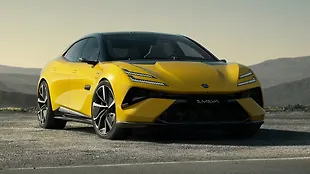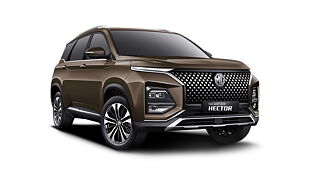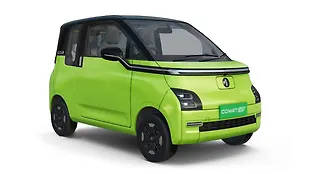Introduction

It’s an exciting time to be a buyer in the Indian car market. Next year, there will be three new manufacturers entering the country and one of those that we are really excited for is MG. The name will sound all too familiar to those of the flower power and disco era as this was during the heyday for two seat models in India and it was not uncommon to see people driving around brightly coloured Midgets, MGBs and MGCs.

Our story, however, begins with a modern iteration of the British automaker. It’s now owned by SAIC, one of the big four automakers in China. They now make a range of hatchbacks, sedans and SUVs and it’s the last one that’s coming to India in the later part of 2019.

Ahead of their arrival into the country, MG took a large contingent of media to the People’s Republic to give them a sample of what they will bring next year. On this trip, we visited their factory at Lingang, R&D centre at Anting and then had a chance to experience some of their electric vehicles at their massive proving ground in the Guangde province. Here is a photo journey of our experiences.

We have already detailed all of MGs plans for India. This includes its new factory, showrooms, first and second car (an EV) for India as well as what is the biggest challenge that it will face when it begins operation here in 2019.
R&D Centre

The construction of SAIC R&D centre in Anting province started in 2005 under an investment of four billion Yuan, covering 419,000 square meters.

The SAIC R&D lab in Anting has a variety of facilities including design building, thermal energy emission lab, architecture lab, NVH, thermal wind tunnel lab, powertrain lab and a new energy lab.

We were given a tour of the lithium-ion battery assembly and testing facilities as a part of the tour as MG, after all, will be launching an electric car in 2020.

During the R&D tour we also got a chance to see the MG E-Motion concept. It’s an electric sports car concept unveiled in 2017 and will be the basis for future sports cars from the brand.

The E-Motion Concept, in the metal, was long, low, full of glowing LEDs, and as expected, with scissor doors. Could it bring back the MGB moniker? Let us hope so!
Lingang factory

The R&D Centre visit was followed by a trip to the SAIC factory in Lingang. Built in 2006, it’s one of the main plants for producing MG and Roewe cars in the country.

The plant is almost fully automated with 3 lines producing the cars. Its facilities also comprise a paint shop, engine assembly plant and is capable of rolling out 40 cars an hour.

Cars produced from this plant include the GS, HS, Marvel-X as well as hatchbacks and sedans like the MG3 and MG6.
One of the things we found quite impressive was that the assembly lines have been tooled out to produce both ICE vehicles as well as electric cars on the same lines. The automaker has said that many of the production practices seen in the Lingang plant will be brought to its Halol factory when operations begin in India next year.
Proving Ground and E-drive

The whole proving ground consists of eight major test items, including hill test, oval track, environment test, durability test, long straightaway, ride and handling, vehicle dynamics and low adhesion coefficient.

At the proving grounds, we also got an opportunity to experience the cars, but with a twist- everything we drove was an electric car.

On a section used to test ride quality, we drove the Marvel X SUV and true to its name the car was, well…marvellous!
It’s in essence a mid-size SUV and is the Chinese automaker’s answer to cars like Audi e-tron and Mercedes-Benz EQ SUV. The car is sold only as a Roewe and for now in China only.

In Marvel-X’s sister car, the MG ERX5, we took to a section that simulated low grip conditions as well as an ABS test.

The final test saw us drive the eMG6 in a gymkhana set up. Made up entirely of cones, this part, of course, was quite deceptive as it looked easy but turned out to be quite complicated. It was hard to ascertain the braking points but I managed a respectable time of 1.33 minutes despite missing many of the cones and the lane change sections.

![MG Hector [2019-2021] Image MG Hector [2019-2021] Image](https://imgd.aeplcdn.com/272x153/cw/ec/36756/MG-Hector-Right-Front-Three-Quarter-166301.jpg?wm=0&q=80)
![MG Hector [2019-2021] Right Front Three Quarter MG Hector [2019-2021] Right Front Three Quarter](https://imgd.aeplcdn.com/199x112/cw/ec/36756/MG-Hector-Right-Front-Three-Quarter-166301.jpg?wm=0&q=80)
![MG Hector [2019-2021] Right Front Three Quarter MG Hector [2019-2021] Right Front Three Quarter](https://imgd.aeplcdn.com/199x112/n/cw/ec/36756/hector-exterior-right-front-three-quarter-166302.jpeg?q=80)
![MG Hector [2019-2021] Right Front Three Quarter MG Hector [2019-2021] Right Front Three Quarter](https://imgd.aeplcdn.com/199x112/n/cw/ec/36756/hector-exterior-right-front-three-quarter-166303.jpeg?q=80)
![MG Hector [2019-2021] Dashboard MG Hector [2019-2021] Dashboard](https://imgd.aeplcdn.com/199x112/n/cw/ec/36756/hector-interior-dashboard.jpeg?q=80)
![MG Hector [2019-2021] Steering Wheel MG Hector [2019-2021] Steering Wheel](https://imgd.aeplcdn.com/468x263/n/cw/ec/36756/hector-interior-steering-wheel.jpeg?q=80)

























